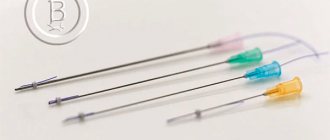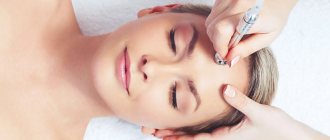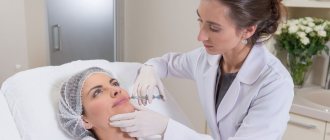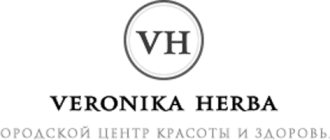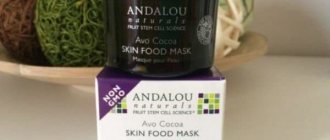From this article you will learn:
- What is facial plasmatherapy
- Who is indicated and contraindicated for facial plasmatherapy?
- Where is blood taken for the procedure?
- When will the effect be noticeable?
- What are the pros and cons of the procedure?
- What doctors and patients say about facial plasmatherapy
- How much does facial plasmatherapy cost in Moscow?
- What analogues exist
In pursuit of beauty and freshness of the skin, ladies are capable of much: they are ready to endure discomfort, endure a long recovery period, painful injections, etc. Fortunately, the beauty industry is developing very actively; today more and more innovative methods are appearing on the market that help preserve the youth and beauty of the face without pain or marks from an injection. A good example is facial plasma therapy.
What is facial plasmatherapy
This method of rejuvenation differs from thermolifting in that it is not hardware. Thermolifting of the face, along with mesotherapy, is carried out by introducing a substance (for facial plasma therapy, blood belonging to the patient is used) into certain areas of the face. When injecting, a very thin needle is used, which is injected subcutaneously.
Imagine that the earliest experiments with the biostimulating functions of blood in science were made a hundred years ago. During this period, autohemotherapy was discovered to humanity - injecting blood, which was taken from the patient, directly into the muscle. Such a “shake-up” quickly activated metabolic processes and helped protect the immune system. However, there were also disadvantages of the procedure: harmful substances were also transferred into the body with the blood. This method never became popular.
The use of plasma for cosmetic purposes has appeared relatively recently; facial plasma therapy can even be called a novelty in aesthetic medicine. When performing a plasma therapy procedure on a person, only purified blood is used; platelet-filled plasma is required, unlike, for example, the autohemotherapy procedure.
Now let's talk about a particularly significant moment! Very often, the very name “plasma therapy” confuses patients. They may think it's a facelift procedure, but that's not entirely true! Facial plasma therapy must be carried out in combination with other procedures.
Recommended articles on the topic:
- Facial mesotherapy procedure: pros and cons
- Beauty injections: types of drugs, reviews
- Placental therapy is the secret of eternal youth
Centrifuge and correctly selected centrifugation parameters
The centrifugation process cannot be too fast, otherwise the platelets will be damaged. It should also not be too slow, otherwise it will be impossible to properly separate the blood components.
Proper placement of the tubes is also important. Centrifuge tubes must be positioned horizontally because the centripetal force acts parallel to the long axis of the tube. In angled centrifuges, the tube is centrifuged at an angle of 20-30 degrees, and this already gives a worse effect.
Horizontal centrifuges cost twice as much as angular centrifuges, which is why most cosmetologists purchase angular devices. This reduces the cost of the procedure, while simultaneously reducing efficiency.
Where is blood taken for facial plasmatherapy?
The fact that blood has been considered a magical rejuvenating agent since ancient times is evidenced by many legends and real stories:
- The ancient Romans drank the blood of conquered gladiators.
- In China, they used the blood of murdered young men.
- Many have heard the story of Countess Bathory. There were legends that all her crimes were committed with the aim of obtaining the blood of young girls, with the help of which the Countess kept her skin fresh.
Obviously, people have long subconsciously realized that blood can have a slowing effect on age-related changes in the skin. Of course, at that time humanity did not have enough knowledge, so attempts to rejuvenate were cruel, but unsuccessful. Fortunately, you have a great opportunity to slow down aging effectively and painlessly - this is facial plasma therapy! As we have already said, for facial plasma therapy, only the patient’s own blood plasma, taken from the patient, filled with platelets, is used. Based on the results of many scientific experiments, it turned out that it is thanks to plasma that the metabolism in tissues accelerates, fresh cells appear, and blood circulation in the body increases.
Cells that are located deep in the layers of the skin, after injection, trigger the active synthesis of proteins that ensure the elasticity and firmness of the skin. These are, first of all, collagen and elastin.
We will briefly look at how facial plasma therapy is done. To carry out the procedure itself, it is necessary to take a small amount of blood from a vein - about eight milliliters. It is placed in a test tube, which is pre-treated with a substance to prevent blood from clotting and mixing. After which the blood in a test tube is sent to a special centrifuge, which begins to rotate at a given speed.
These actions divide the blood into two components - white, which is saturated with platelets, it rises to the top of the test tube, and red, with red blood cells, which settles at the bottom of the test tube. Eight milliliters of blood is enough for plasma therapy of the face, neck and décolleté.
What forms of plasma are used?
The native form is autologous plasma prepared using classical centrifugation technology. It is used most often in cosmetology practice. This plasma restores the water balance in the skin, reduces age-related changes and activates regeneration. This is the most biologically stimulating form of plasma.
Fibrin form of autologous plasma - heated at a temperature of 56C. As a result, fibrinogen irreversibly clots. The resulting fibrin form is a specific mesh matrix on which monocytes, fibroblasts and other cells accumulate, which activate collagen production. Fibroblasts attracted and accumulated on the injected fibrin significantly increase skin turgor and thicken it.
The gel form of autologous plasma is heated in a thermostat for 10 minutes to a temperature of 75-80 C. This plasma is injected into the deep layers of the dermis. It has the strongest effect of strengthening the skin by stimulating the formation of collagen and elastin fibers and best corrects age-related deformational changes. After administration, a lifting effect is observed that increases over several weeks.
Facial plasma therapy: indications and safety
The substance used in the facial plasmatherapy procedure is a component of the patient’s own blood, which is why its rejection is excluded, there are no foreign substances in it, and it does not provoke any side effects. After the introduction of plasma, tissue respiration begins to normalize, they are saturated with oxygen, water balance is regulated, and the formation of collagen with elastin and intercellular substance is accelerated. These processes activate the skin’s protective system and help quickly restore damaged tissue.
The latest research and accumulated experience have proven the positive effect of plasma therapy on a wide variety of areas of the body. Today it is actively and successfully used in the best medical institutions in the world; it is used to combat various ailments in dentistry, traumatology, urology and gynecology. This procedure helps to significantly reduce aesthetic imperfections in cosmetology:
- Pregnancy and lactation period.
- Presence of viral hepatitis.
- Presence of diabetes mellitus.
- Presence of blood diseases.
- Complex diseases of internal organs.
- Mental disorders.
- Presence of cancer.
- Inflammations on the skin of bacterial, fungal, viral or infectious origin.
- Severe tissue ptosis, correctable only with surgery.
- Immunosuppressive state.
- Fever, elevated temperature.
- Autoimmune diseases. Period of menstruation.
- Corticosteroid injections.
- Decreased hemoglobin.
- Dysfunction or low platelet count.
- Allergy to anticoagulants (substances that stop blood clotting).
- Reduced levels of fibrinogen in the blood (hypofibrinogenemia).
- Exacerbation of chronic diseases.
Read material on the topic: Removing moles on the face without pain and consequences
Do not ignore these warnings! Before the procedure, you must consult a doctor; only in the absence of all contraindications can you proceed with facial plasma therapy.
Rehabilitation
Mild pain and swelling of the treated tissues, which disappear completely after three days, are considered normal manifestations during the recovery period. To prevent complications, you need to avoid skin infection and sunburn, irritation from cosmetics or overheating in the bath.
Within two weeks after the session, the skin is completely restored, but since plasma therapy is carried out in courses with an interval of 7-10 days, the entire period between procedures and 14 days after the final session must adhere to some restrictions and rules in caring for damaged skin.
You should not use any cosmetics other than those prescribed by your doctor. It is forbidden to touch or scratch your face, as this will cause infection in the wounds. You should not sunbathe or visit a solarium, and when going outside you should use sunscreen or a wide-brimmed hat. Also, it is prohibited to visit the bathhouse and sauna. It is not recommended to drink alcohol, as it affects blood flow and the rate of skin regeneration. When choosing a sunscreen and regenerating cream, you should definitely consult your doctor.
Facial plasma therapy: pros and cons
The following points are considered to be the advantages of facial plasmatherapy:
- The procedure is safe. To obtain blood saturated with plasma, you need to use only ten to one hundred milliliters of it, and this is completely safe; the loss of such an amount does not have any consequences for a person.
- Naturalness. During the procedure, the patient will receive only his own blood, which means that there are no foreign substances in it, in addition, there are no additives or chemicals.
- The likelihood of an allergic reaction, rejection and other negative responses of the body is very low. There is no need to waste time and effort on the rehabilitation period.
- No scars or scars after the injection.
The disadvantages of the procedure are:
- Expensive.
- The risk of infection with serum infections, which include viral hepatitis, autoinfection (the awakening of viruses in the patient’s blood caused by a change in their location). In order to avoid getting into such a situation, you need to contact only a specialized medical institution that has a license, certificates and other necessary documents. Pay attention to the reviews about the chosen clinic, find out how long it has been providing the required service, and how qualified the specialists are working there.
- You may be allergic to the materials from which syringe needles are made, or to anticoagulants. Before facial plasma therapy, the doctor is required to take a sample for the presence of an allergen.
Mechanism of action of plasma lifting
To use this method of cell regeneration, platelet autoplasma (TAP) is required. It does not contain red blood cells, and the number of platelets in it is close to their number in peripheral blood (150-350 thousand/μl). Such plasma is very rich in amino acids, mineral elements (potassium, magnesium, zinc, iron, calcium, etc., peptides and vitamins B, C, A, D, E, K, necessary for the life of cells. Being a natural component of the human body , autoplasma does not cause allergic reactions. This method is also universal due to its bioavailability, due to which regeneration processes occur naturally.
Physiologically, the process of plasmolifting occurs as follows: when platelets lose contact with the endothelium, leaving the capillaries and vessels, they change their shape and secrete alpha granules, which saturate the damaged area with growth factors.
The same thing happens in the plasmolifting procedure, when autoplasma is injected into the desired area, i.e. platelet adhesion and the release of growth factors from alpha granules occur, as in a normal protective physiological process.
Facial plasma therapy: reviews from doctors
The author of plasma therapy, Professor Renat Akhmerov, considers the advantages of the procedure:
- One hundred percent reduction of the network of shallow wrinkles;
- Refreshes the skin, evens out the tone;
- Stem cell growth;
- Strengthening the immune and antioxidant systems;
- Quick results after the first use;
- Saturation of skin tissues with oxygen.
He also believes that the procedure has certain disadvantages, some of which we have already discussed earlier:
- Slight discomfort from injections, pain, bruising, swelling;
- The risk of autoinfection with viruses that live in human blood if the norms and requirements for facial plasma therapy are violated.
Video: Doctor R. R. Akhmerov about his technique
Most doctors consider facial plasma therapy to be an easy and non-hazardous procedure. This is due to the fact that the material used is a person’s own blood plasma. If after the procedure there are swelling and hematomas, then this is not a reason to worry; they will definitely disappear in a short time, without needing any treatment. This usually takes from three to seven days.
There are groups of scientists who warn against this procedure for those who have a predisposition to the appearance of malignant neoplasms. The point of view of these specialists is supported by the fact that facial plasma therapy can stimulate the activity of stem cells. In such a situation, we recommend conducting a thorough examination before deciding to undergo facial plasma therapy.
The difference between plasma therapy and PRP therapy
Plasma therapy and PRP therapy are procedures with the same principle of action, but slightly different in the material used. Their effect is also somewhat different. The main difference is the density of platelet concentration per microliter. processed plasma. For plasma therapy, plasma containing 200 - 4000 thousand platelets per μl is prepared, and for PRP therapy, plasma containing 1,000,000 platelets per μl is used.
Well, there are slight differences in the frequency of injections in the course - with plasma therapy they are given more often and the number per course is greater. The average standard course of plasma therapy includes 4 sessions with a frequency of 7-10 days (to maintain the result, 2 courses are done per year), and the standard average course of PRP therapy includes 3 sessions with a month interval between them (to maintain the result, the course is repeated once a year) .
Facial plasma therapy: customer reviews
Natalia (33 years old), Moscow
I was very embarrassed about my wrinkles around my eyes, on my forehead and in my lips. They appeared not so long ago, but were already very noticeable! In addition, I have long and unsuccessfully struggled with a double chin and pigmentation on my face. There is simply no result! I heard about facial plasma therapy from a friend and soon decided to do it. The result exceeded my expectations! The skin became soft, wrinkles disappeared, even the double chin shrank, and the complexion became much smoother. Feeling of freshness and youth, velvet skin! I was lucky to get into a period of good discounts, the savings turned out to be decent! Now I can safely recommend facial rejuvenation with plasma therapy!
Larisa (43 years old), Voronezh
Expression wrinkles are some kind of punishment! I tried all the means and spent a lot of money on different procedures, of course there was an effect, but it quickly ended. In addition, my skin was very dry and inflamed, and peeling only made things worse. One cosmetologist told me about facial plasma therapy. I became interested and learned more about the procedure, its safety and effectiveness. To be honest, I didn’t have much faith in the result, but the decisive argument in favor was the use of plasma from my blood. I donated blood, after which I was injected with plasma separated from it. During the process, I felt almost nothing; I was given two approaches a couple of weeks apart. I was pleased with the effect - wrinkles decreased, acne disappeared altogether, and my complexion was refreshed. The most important thing is that I have had no skin problems for more than three months, and all this thanks to facial plasma therapy.
Ksenia (36 years old), Kerch
I had fractional thermolysis, and after seven days I also had facial plasma therapy. I'm very impressed with the result. After the fractional thermolysis procedure, my skin tightened and the old dead layer came off. The doctor said that when using a laser, very small incisions are made on the skin, which damages it; this is the only way to renew the cells, because regeneration will begin. I was scared, so in addition I preferred facial plasma therapy, which was prescribed to me after fractional thermolysis. Thanks to the plasma therapy procedure, the skin began to recover much faster after laser exposure. This is how I got rid of dead skin cells.
Read material on the topic: Laser facial skin rejuvenation: useful tips and recommendations
Plasma separation tube sets - right and wrong
The safety and effectiveness of plasma lifting depends on proper plasma preparation. The specialist should not use simple test tubes; only certified disposable kits should be used.
It is important to understand that the leukocyte-platelet layer between red blood cells and plasma is so thin that it is practically technically impossible to obtain without special equipment - profiled tubes with narrowings or a set of channels for separating plasma.
Plasmolifting
How does the facial plasmatherapy procedure work?
If a person intends to undergo facial plasma therapy, he needs to attend a preliminary consultation with a doctor, during which he must:
- Carefully inspect the skin
- Diagnose skin diseases
- Schedule general tests
Only after receiving the results of a medical examination is a balanced decision made on whether to authorize or prohibit the facial plasma therapy procedure for a given patient. Upon admission, the doctor sets a date for the service.
Before undergoing facial plasmatherapy, the patient must do the following:
- Completely avoid drinking alcoholic beverages, strong tea and coffee, hot, spicy, salty, sour and fried foods a few days before plasma therapy.
- Increase your water intake.
- You are not allowed to smoke on the day of the procedure.
- You cannot eat five hours before the procedure.
Girls need to be even more careful when planning the date for facial plasma therapy. The best period for the procedure is considered to be the first phase of the menstrual cycle and the first half of the day.
Please note that it is simply impossible to carry out facial plasma therapy at home, because blood plasma must be processed using special equipment and under certain conditions.
Immediately before plasma therapy, it is necessary to cleanse the face of any cosmetics, only after this a professional disinfectant is applied to the skin, and then numbed (usually with ice-caine). After this, you can begin to inject.
The injection of processed plasma is given with a very thin needle, similar to an insulin needle. The doctor must distribute the plasma as evenly as possible, otherwise the patient will leave with bruising and swelling. The average duration of a facial plasmatherapy procedure is one hour. After the injections, the cosmetologist massages the patient’s face, resulting in an even distribution of the substance under the skin.
The patient should begin preparing for plasma therapy seven days before the procedure itself, you can do a light facial massage, and you should temporarily stop using scrubs and peels.
Post-procedural period
It should be remembered that the presence of microhematomas and slight swelling in the area of impact is a normal phenomenon when performing injection techniques.
However, some rules must be followed:
- Refusal of decorative cosmetics and cosmetics for a day. If the eye area was not touched, you can paint your eyelashes.
- Avoid touching, scratching or rubbing your face for up to 24 hours
- After washing, treat the skin with an aqueous solution of chlorhexedine for 2-3 days.
- Saunas, steam baths, swimming pools are prohibited for 2 weeks. Considering this, and the fact that the full course consists of at least 4 procedures performed at intervals of 2 weeks, it should be understood that visiting such establishments is excluded for the entire course of plasma lifting. Sauna, hammam, bathhouse and other similar pastimes lead to irritation of injured skin and also promote the growth of bacteria in a humid environment
- Refusal from solarium and open sun until the face is completely restored. In the future, sunbathing is possible with the application of sunscreen
- Intense physical activity is also prohibited during the period of restoration of facial tissues, since excessive sweating may cause inflammation of micro-wounds after injections
- “Can I drink after plasma lifting?” the most frequently asked question. Alcohol slows down the body's recovery processes and also increases swelling. Therefore, at least on the first day, it is better to give up alcoholic beverages.
When is the effect of facial plasma therapy noticeable?
It will be possible to compare the results of facial plasma therapy “before and after” ten days after the injection. Unfortunately, not all patients observe a pronounced effect after the first procedure; sometimes it seems that nothing has changed. When rejuvenating the face with plasma therapy, the result depends on age characteristics; when treating acne, it depends on the duration of the disease. In addition, the general condition of the patient’s body plays an important role.
The plasma therapy technique provides:
- Anti-aging effect
. Gets rid of obsolete cells, helping the emergence of new ones. The skin is transformed - it acquires lost smoothness, elasticity and softness. Facial plasma therapy activates the activity of the BCL gene, which can slow down aging at the cellular level.
- Protective effect
. The skin's protection from ultraviolet rays is enhanced, and the regeneration process proceeds faster, which is why any damage heals in a shorter time. The skin becomes more resistant to the negative effects of external factors.
- Moisturizing effect
. Prevents dehydration, starts the process of formation of proteins that ensure the elasticity of the skin. With sufficient hydration, the feeling of tightness disappears and the risk of developing inflammation and skin irritation is reduced.
- Reduces skin photosensitivity
. Starting cell metabolism reduces the likelihood of pigmentation, the face becomes fresher, and the color is evened out.
- Improves skin trophism
. The process of blood circulation in the vessels is normalized, which ultimately allows the process of cell regeneration to be accelerated.
- Lifting effect
. Due to serious hydration, the oval of the face is also tightened.
- Fights hyperpigmentation
. The process of evening out the complexion begins, which occurs when getting rid of dead skin cells.
The essence of the procedure
The main active ingredient in the plasma lifting procedure is the patient’s own blood, processed by a special method. During this treatment, plasma with an increased concentration of platelets is released. Platelets are known to contain growth factors responsible not only for blood clotting, but also for the regeneration and growth of young tissue. In addition, platelets have the ability to accumulate around problem areas in tissues, thus the action of growth factors becomes targeted. Under the influence of growth factors, new blood vessels grow, as a result of which tissue oxygenation improves, the influx of nutrients increases and, as a result, complexion improves, pigmentation and severity of wrinkles decrease, and the oval of the face tightens
When facial plasma therapy does not bring the expected result
Unfortunately, facial plasma therapy cannot be called a panacea for aging for everyone. When studying numerous reviews, based on the comments of specialists, we can conclude that in some situations the facial plasma therapy procedure does not have the desired effect. Moreover, it can even aggravate poor facial skin conditions. The patient must undergo all examinations required of him, and cosmetologists and doctors, in turn, must strive to improve the quality of the procedure and to eliminate accidents during its implementation.
Authoritative experts believe that facial plasma therapy can cause a negative result only in certain cases, which are dictated by mistakes and deviations from strict norms of the procedure. Thus, we can classify failed facial plasma therapy and negative reviews into three groups:
- Neglect by the patient or doctor of existing contraindications. Before collecting plasma and administering injections, you need to familiarize yourself with all the prohibitions; if you ignore them, you may encounter completely unpredictable consequences. Both the specialist and the patient himself are considered the responsible person. For example, a doctor may be careless in ordering an examination, and the patient himself may hide any illnesses or take certain substances.
- Violations committed by a specialist during facial plasmatherapy. This procedure involves precise intradermal injection, which is carried out only along certain lines of skin tension. When a specialist does not follow these rules, complications may arise that overshadow the result.
- Inflated expectations from plasma therapy for facial rejuvenation. Most people who want to try this procedure mistakenly understand its purpose. As we said, this is not a facelift! The effect of plasma therapy cannot be compared with surgery, so some patients are extremely upset by the result, believing that they were simply deceived. The specialist must accurately and clearly explain to the patient all the pros and cons of the procedure, describe the final result and not hide possible complications.
In order for you to understand where the boundaries of the cosmetologist’s powers lie and the responsibility of the patient begins, you need to get acquainted with specific negative reviews about the procedure. As you read, you will understand what motivates the commentators, and will also form a clearer picture of facial plasma therapy.
Elizaveta (34 years old), Samara
I went to do facial plasma therapy, chose one of the expensive salons, they questioned me for a very long time, then they took tests and after all this they sent me for facial plasma therapy. After the procedure, I had bruises all over my face, which is why I was scheduled for new examinations! It turned out that it was because of my pills. I didn’t even think that a simple painkiller could lead to this, so I didn’t tell the cosmetologist about taking it.
It is quite obvious that in this situation the patient is to blame - you cannot remain silent if you are taking NSAIDs, because they reduce blood clotting. The doctor always interviews the patient; it is necessary to accurately answer all his questions, because this is done for your own good!
Valeria (26 years old), Penza
Plasma therapy is a nightmare. During pregnancy, pigmentation appeared on my face; I was recommended mesotherapy or plasma lifting. The doctor said that in my situation it is better to choose facial plasma lifting, because it requires my plasma, and not some chemicals. Well, I agreed! And after the procedure, my face was very swollen. The cosmetologist suggested that this was a complication due to pregnancy. I started looking for information and found out that during pregnancy you can’t do plasma lifting at all, or even mesotherapy! Apparently they don’t care about human health, they only think about money.
Read material on the topic: Facial mesotherapy procedure: pros and cons
Plasmolifting in cosmetology
In this area, plasma lifting has received almost the widest application compared to others. It is no secret that cosmetology is one of the most expensive branches of medicine, therefore innovations in cosmetology are especially valuable for patients. With the help of plasma lifting, doctors managed to replace a series of cosmetic procedures that have a high risk of complications after the procedure.
Plasmolifting in cosmetology is a lifesaver for those who are desperate to restore the beauty of their appearance with expensive procedures. In cosmetology, plasma lifting solves the following issues:
What procedures are combined with plasma therapy for facial skin?
Plasma therapy goes well with many cosmetic and medical procedures:
- Biorevitalization.
- Chemical peels of varying depths of impact.
- Radio lifting.
- Bioreinforcement.
- Laser photothermolysis.
- Laser hyaluronoplasty.
- Exposure to a combined laser.
For example, the action of a combined laser increases the rejuvenation effect after facial plasma therapy, laser hyaluroplasty trains the skin, preparing it to increase the level of hyaluronic acid, and laser photothermolysis consolidates the effects of facial plasma therapy.
Plasmolifting: before and after photos
Plasmolifting of the face
Plasmolifting for pigmentation
Plasmolifting for acne and post-acne
Plasmolifting for hair
Plasmolifting of the body
Plasmolifting of the abdomen
Plasmolifting of the breast
What are the analogues of facial plasma therapy?
Plasma therapy is usually compared with other cosmetic and medical services that help combat signs of aging and improve the overall condition of facial skin:
- Mesotherapy. The procedure is carried out using an injection, which includes a specific mixture of drugs, it is designed to solve certain skin problems.
- Hyaluronic acid injections. This substance makes the skin more elastic and eliminates wrinkles.
- Rejuvenation with ozone. It is injected into problem areas. Ozone is able to activate cellular metabolism, which promotes renewal of the subcutaneous tissue, improves complexion and corrects skin imperfections.
- Botox and Dysport injections can correct wrinkles and tighten the skin. The substances included in the preparations relax the facial muscles, which guarantees a lifting effect.
- Facial contouring. This procedure involves the introduction of various substances based on hyaluronic acid, the skin of the face is smoothed and tightened.
Indications for plasma lifting
In cosmetology, the use of plasma lifting is advisable in the following cases:
- loss of skin elasticity, deterioration of its turgor;
- unwanted skin pigmentation;
- noticeable facial wrinkles, the appearance of age-related folds on the skin;
- sagging face, deterioration of facial oval;
- gray, “tired” complexion;
- post-acne and acne;
- scars and stretch marks on the skin;
- hair loss (alopecia) and deterioration of their condition.
Of course, the use of autoplasma in cosmetology is not limited only to the face and scalp; these reasons are only the main ones. The method is used on any part of the human body that has defects. Body plasma lifting is a popular procedure. It is used locally to treat cellulite and obesity and rejuvenate the skin of the body.
